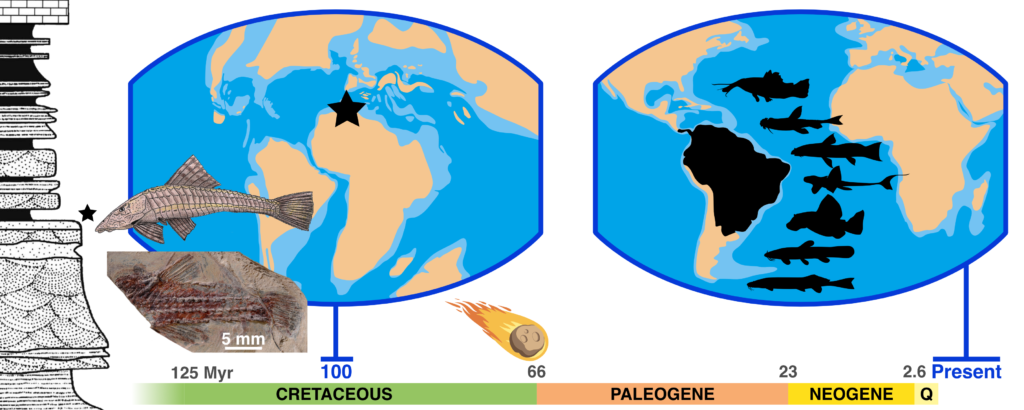South America is considered the place of origin and initial diversification of freshwater catfishes, based on the fact that the most basal clades–Diplomystidae (velvet catfishes) and Loricarioidei (suckermouth and armoured catfishes)—are all endemic to the Neotropical region (South and Central America) and that their fossil record is also confined to this region.
In an article led by Paulo Brito of the Universidade do Estado do Rio de Janeiro and published today in Gondwana Research we overturn this conventional view by reporting, from early Late Cretaceous freshwater deposits of Morocco, the earliest known occurrence of an armoured catfish, are more generally of a catfish. We assign unequivocally this new fossil to the extant and incredibly diverse clade Loricarioidei and to the family Loricariidae (which encompasses more than 40% and 25% of extant catfish diversity, respectively), based on an exceptionally preserved specimen described using (and this was my contribution) state-of-the-art imaging techniques including synchrotron X-ray tomography.
This occurrence predates the predicted origin of Loricariidae by about 72 Myr and indicates that they have an African rather than South American origin, dramatically changing our understanding of the temporal and biogeographic range of catfishes. This also reveals overlooked evolutionary events that took place during the early phase of the break-up of western Gondwana, supporting the existence of a common and endemic western Gondwana freshwater fauna before the complete separation of Africa and South America.

Reference: Brito P.M., Dutheil D.B., Gueriau P., Keith P., Carnevale G., Britto M., Meunier F.J., Khalloufi B., King A., de Amorin P.F. & Costa W.J.E.M. 2024. A Saharan fossil and the dawn of Neotropical armoured catfishes in Gondwana. Gondwana Research 132, 103–112. Link to the article (under paywal) here
